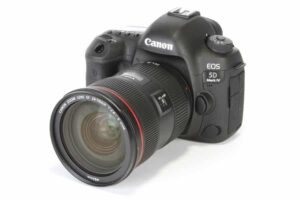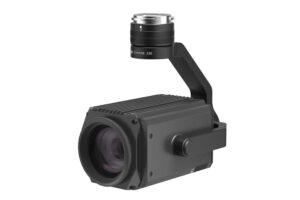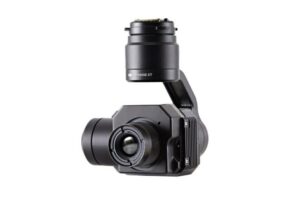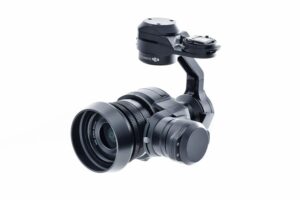GUTTER INSPECTIONS by 15m MAST
In the case of gutters, prevention is definitely better than cure. A neglected gutter can lead to the degradation of the whole system, prevent roof drainage and even lead to water ingress and a costly repair bill. Regular inspection is recommended to spot problems before they develop into anything more serious – annual monitoring is ideal although this should be more frequent if the guttering is near to trees that can cause additional silt to build up and blockages.

Gutter Inspection by Photographic Mast


Older gutter systems are the most vulnerable to problems as they were never designed to cope with the volume and intensity of the rainfall that we now receive. However, even new roof drainage systems can suffer from damage caused by structural movement, corrosion, insufficient outlets and blockages.
The risk and costs associated with regular preventative gutter inspections can be off-putting when you are using traditional methods such as erecting scaffolding or hiring cherry pickers. Today’s technology means that these old-fashioned methods are no longer the only possible solutions. Aerial inspection using drone or telescopic mast are both now fast and affordable and can provide the solution to your inspection needs.
Drone based inspection can offer unprecedented access to your roof space, revealing all aspects and angles in a way that is both cost-effective and non-intrusive. Using a UAV to carry out the work in the hands of a trained and CAA approved pilot on the ground is both fast and reliable – the high definition images and / or video allow detailed analysis of each easier whilst sidestepping the risks of working at height or the chance of damage to fragile roof elements that can occur using traditional inspection methods.
Where a guttering issue is already suspected, an aerial inspection can pinpoint the exact fault and allow repairs to be carried out in a target manner. If scaffolding is required, it can be limited solely to the relevant areas rather than having to cover a building in order for a visual inspection to be carried out. This can represent both a significant cost saving as well as minimising the disruption to daily life or business operations that repair work will inevitably cause.
Aerial inspections can be used to evaluate gutter systems and search for…
- Blocked downpipes
- Weak and damaged joints
- Corrosion
- Plant growth
- Insufficient outlet capacity
- Split or damage to gutters or downpipes
- Silt accumulation in joints, ends and outlets
Drones are fast and powerful tool to take care of any number of aerial inspections. However, UK Drone Laws mean that they are not appropriate in all cases. For example, in congested areas, properties near to airports or other protected locations. Luckily, they are just one element in our inspection toolbox – we can also deploy a portable, free standing, telescopic mast. This is capable of transporting the camera to a height that allows for easy inspection of buildings up to three storeys high. Supported by a freestanding tripod, the footprint required is relatively small, especially when compared to elevated platforms or scaffolding. The use of the mast negates the needs for the permissions regarding working in a congested area that a drone requires in order to be legally flown. Our operatives will be able to advise you of the best solution to your inspection needs.
Commercial Property Gutter Systems
Regular gutter inspections should form part of any commercial property maintenance routine. Early signs of issues can be spotted through scheduled inspection and addressed before more serious issues such as internal water ingress (and the attendant repair bills and disruption) occur.
Annual inspections are the minimum that is recommended although the recommended frequency moves to biannual if the property is near to trees.
The construction of the gutter system also has a bearing on the inspection schedule. For example, the Metal Gutter Manufacturers Association recommends annual inspections, but quarterly in the case of newly installed systems to ensure any issues related to leaf drop or periods of intense rainfall are highlighted.

BS EN 12056-3:2000 ‘Gutters, rainwater pipes, outlets and gratings should be inspected and thoroughly cleared or more often if the building is in or near to an industrial area or is near trees or may be subject to extremes of temperature’
Drone or mast aerial inspection can provide the perfect solution to your gutter maintenance needs. Where several properties are grouped together on an industrial estate managed by a single commercial property agency, all the units can be inspected together – offering substantial cost savings and minimising any disruption to the businesses involved.
- Commercial & Industrial
- Domestic Inspections
- Guttering System Evaluations
- Live Image Streaming
- Easy Image and Video Sharing between all Interested Parties
- Reduced Downtime
- No Scaffolding or Platform Hire Costs
- No Risks Associated with Working at Height
- Drone or Telescopic Mast Solutions Available
Addressing Health and Safety in Roof Work
Every year, many workers are killed or injured while working on roofs. This is unsurprising as it is an obviously high-risk activity – accounting for 24% for death including falling from heights or through fragile roofing materials. Not all of these casualties are trained roofers – a good proportion of these will be carrying out other tasks such as maintenance and surveying.
So it is clear that, if there is a route to avoid working at height whilst achieving the desired result, it is sensible to take it. In fact, the Work at Height Regulations set out a hierarchy for planning work at height and the top tier is exactly that – Avoidance.
Clearly roof and guttering inspections are a necessary part of a property maintenance routine and our drone and mast inspection tools offer the perfect avoiding the associated risks. Detailed inspection data including high resolution images and HD video can also minimise future risks as they apply to any workers carrying out the repairs identified. Detailed planning can take place with targeted information as to the exact nature of the task in hand. Risks can be assessed and mitigated and time working at height can be minimised.
Whilst health and safety risks are obviously of a primary concern, the costs associated with providing tower scaffolds and stair towers are extensive. If these are rendered unnecessary by alternative and indeed safer inspection methods, then UAVs or masts would seem to offer a positive solution from all aspects.
NO LEGAL DISTANCE RESTRICTIONS
Masts are not required to remain a 30m/50m distance from People, Property, Vessels and Vehicles. This allows us to get in close for all inspection work whether filming video or capturing photographic of Thermal images
NO BATTERY & TIME LIMITATIONS
Unlike Drone flights, Masts are not restricted by time due to battery depletion. This means that with Mast photography, video and thermal capture the session can continue for much longer periods of time, capturing much more
NO WEATHER DEPENDENCY
Drones can not fly in bad weather conditions, unlike Mast photography, video and thermal capture when using appropriate weather protected coverings/material, sessions can continue in rain and much higher wind conditions.
The following camera technology is available with Mast Photography, Video and Thermal Imaging
CANON 5D IV

Uncompromising image quality and a thoroughly professional performance producing 30.4 Megapixels, 4K Video, GPS and RAW image workflow. The camera can shoot 7 fps and HDR Movie along with Time-lapse Movie
ZENMUSE Z30

The Zenmuse Z30 is the most powerful integrated aerial zoom camera on the market with 30x optical and 6x digital zoom for a total magnification up to 180x. It enables you to get a detailed look at structures to detect damage.
ZENMUSE XTr THERMAL

The Zenmuse XT is developed by market leaders FLIR and DJI. It provides high-sensitivity (50mK) thermal imaging at 640/30 fps. Radiometric technology allows pixel level accurate temperature measurements or select an area to display average, highest, and lowest temperatures within the selection.
ZENMUSE X5S

The Zenmuse X5S has a dynamic range of 12.8 stops using a Micro 4/3 sensor. Capable of capturing 5.2K 30fps video as well as 4K 60fps using H.264 and 4K 30fps using H.265 (both at 100Mbps). Continuous DNG burst shooting at 20fps with 20.8MP images is also supported.


